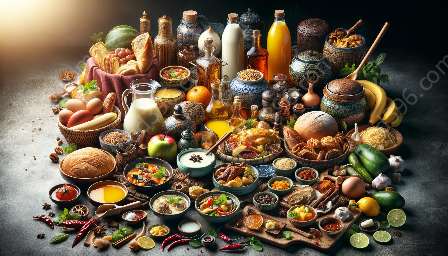The Middle Eastern cuisine is a culinary tapestry woven with an array of unique flavors, regional variations, and historical significance. From the aromatic spices of North Africa to the savory kebabs of the Levant, explore the rich and diverse food culture of the Middle East.
Regional Variations in Food Culture
The Middle Eastern region encompasses a wide spectrum of culinary traditions, influenced by a myriad of factors such as geography, climate, and historical interactions. Each sub-region and country within the Middle East boasts its own distinctive flavors and cooking techniques.
North Africa
North African cuisine, characterized by its bold and aromatic flavors, is heavily influenced by Berber, Arab, and Mediterranean culinary traditions. Couscous, a staple of North African cuisine, is often paired with flavorful tagines and fragrant stews. The use of spices like cumin, coriander, and cinnamon adds depth and warmth to dishes, reflecting the region's rich culinary heritage.
Levant
The Levant region, including countries such as Lebanon, Syria, Jordan, and Palestine, boasts a diverse and vibrant culinary landscape. Mezze, a selection of small dishes, is a central feature of Levantine cuisine, offering an array of flavors from hummus and tabbouleh to kebabs and kibbeh. Olive oil, herbs, and fresh produce feature prominently in Levantine dishes, reflecting the region's fertile lands and agricultural traditions.
Persian Gulf
The Persian Gulf region, comprising countries like Iran, Iraq, Kuwait, and the United Arab Emirates, showcases a unique blend of flavors influenced by Persian, Arab, and Indian culinary traditions. Rice dishes, such as biryani and pilaf, are popular in this region, often accompanied by succulent kebabs and marinated meats. The use of saffron, cardamom, and rosewater imparts a distinctive aroma and flavor to Persian Gulf cuisine, complementing its rich culinary heritage.
Food Culture and History
Middle Eastern cuisine is deeply rooted in history, with culinary traditions passed down through generations, shaped by cultural exchanges, and influenced by conquests and trade routes from across the globe.
Ancient Influences
The cuisine of the Middle East carries the influence of ancient civilizations such as the Egyptians, Mesopotamians, and Phoenicians. From the use of grains like wheat and barley to the cultivation of olive trees and grapevines, many culinary practices and ingredients trace their origins back to these ancient societies, laying the foundation for the rich food culture present in the region today.
Trade and Conquests
The Middle East, situated at the crossroads of Asia, Africa, and Europe, has been a melting pot of cultures and culinary influences. The spice trade, in particular, played a significant role in shaping Middle Eastern cuisine, introducing exotic spices like cinnamon, cloves, and nutmeg to the region. Additionally, conquests and invasions by various empires, including the Ottoman and Abbasid empires, brought new flavors and cooking techniques, further enriching the culinary tapestry of the Middle East.
Modern Fusion
In the modern era, Middle Eastern cuisine continues to evolve, influenced by globalization, diaspora communities, and the fusion of traditional and contemporary cooking styles. Innovative chefs are revitalizing classic recipes with modern twists, while also preserving the authenticity of traditional dishes. This dynamic culinary landscape reflects the adaptability and resilience of Middle Eastern food culture in an ever-changing world.

